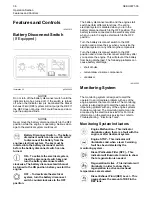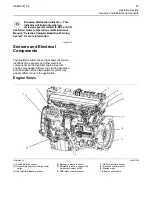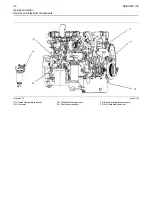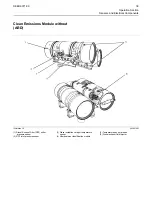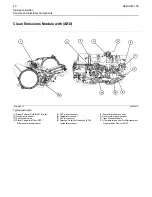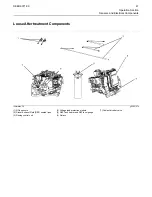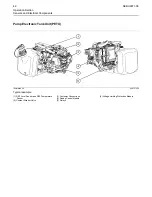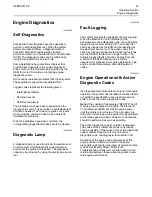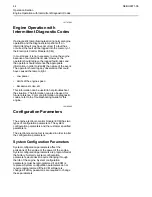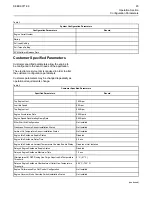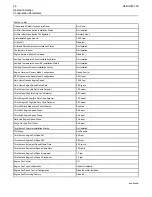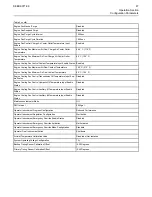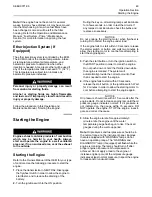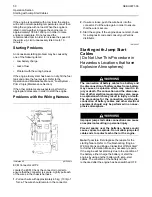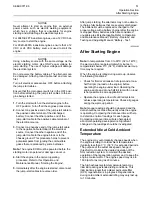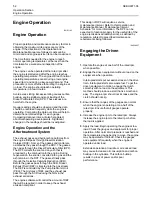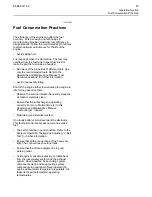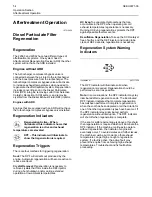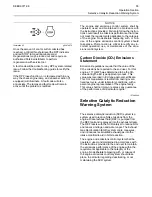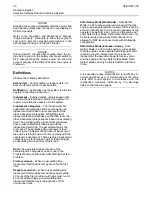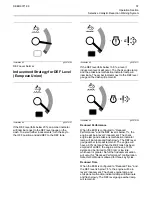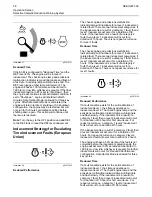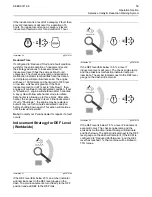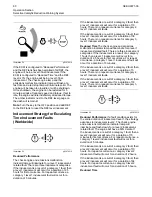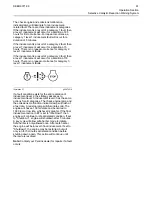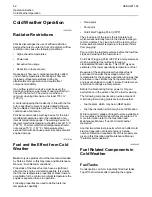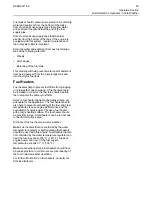
Engine Starting
i02109067
Before
Starting
Engine
Perform
the
required
daily
maintenance
and
other
periodic
maintenance
before
the
engine
is
started.
Inspect
the
engine
compartment.
This
inspection
can
help
prevent
major
repairs
at
a
later
date.
Refer
to
the
Operation
and
Maintenance
Manual,
“Maintenance
Interval
Schedule”
for
more
information.
• For the maximum service life of the engine, make
a thorough inspection before the engine is started.
Look for the following items: oil leaks, coolant
leaks, loose bolts and trash buildup. Remove trash
buildup and arrange for repairs, as needed.
• Inspect the aftercooler for loose connections and
for debris buildup.
• Inspect the cooling system hoses for cracks and
for loose clamps.
• Inspect the alternator and accessory drive belts for
cracks, breaks, and other damage.
• Inspect the wiring for loose connections and for
worn wires or frayed wires.
• Check the fuel supply. Drain water from the water
separator (if equipped). Open the fuel supply
valve.
NOTICE
All valves in the fuel return line must be open before
and during engine operation to help prevent high fuel
pressure. High fuel pressure may cause filter housing
failure or other damage.
If the engine has not been started for several weeks,
fuel may have drained from the fuel system. Air may
have entered the filter housing. Also, when fuel filters
have been changed, some air pockets will be trapped
in the engine. In these instances, prime the fuel
system. Refer to the Operation and Maintenance
Manual, “Fuel System - Prime” for more information
on priming the fuel system.
Engine exhaust contains products of combustion
which may be harmful to your health. Always
start and operate the engine in a well ventilated
area and, if in an enclosed area, vent the exhaust
to the outside.
• Do not start the engine or move any of the controls
if there is a
“
DO NOT OPERATE
”
warning tag or
similar warning tag attached to the start switch or
to the controls.
• Ensure that the areas around the rotating parts are
clear.
• All of the guards must be put in place. Check for
damaged guards or for missing guards. Repair
any damaged guards. Replace damaged guards
and/or missing guards.
• Disconnect any battery chargers that are not
protected against the high current drain that is
created when the electric starting motor (if
equipped) is engaged. Check electrical cables and
check the battery for poor connections and for
corrosion.
• Reset all of the shutoffs or alarm components.
• Check the engine lubrication oil level. Maintain the
oil level between the
“
ADD
”
mark and the
“
FULL
”
mark on the oil level gauge.
• Check the coolant level. Observe the coolant level
in the coolant recovery tank (if equipped). Maintain
the coolant level to the
“
FULL
”
mark on the coolant
recovery tank.
• If the engine is not equipped with a coolant
recovery tank maintain the coolant level within
13 mm (0.5 inch) of the bottom of the filler pipe. If
the engine is equipped with a sight glass, maintain
the coolant level in the sight glass.
• Observe the air cleaner service indicator (if
equipped). Service the air cleaner when the yellow
diaphragm enters the red zone, or when the red
piston locks in the visible position.
• Ensure that any driven equipment has been
disengaged. Minimize electrical loads or remove
any electrical loads.
i04132731
Cold
Weather
Starting
Startability
will
be
improved
at
temperatures
below
10°C
(50°F)
from
the
use
of
a
cylinder
block
coolant
heater
or
from
other
means
that
are
used
to
heat
the
crankcase
oil.
Some
engine
applications
use
a
jacket
water
heater
to
improve
startability.
Use
of
a
jacket
water
heater
will
help
reduce
white
smoke
and
misfire
during
start-up
in
cold
weather.
48
SEBU9071-06



